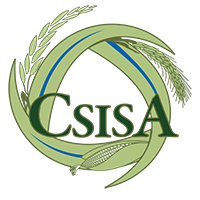Improved Livestock Feeding Enhancing Income Among Dairy Farmers
The development of local service providers for straw chopping and concentrate feed production provided a new business opportunity and improved availability and access to better feed for dairy farmers.
Anuj Kumar Jha, a young farmer from Samastipur district in Bihar, had 0.2 hectare of agricultural land but was unsure what to do with such a small parcel of land. With CSISA’s support he learned that with a small investment he could start a dairy business.

Jha bought a crossbred cow for US$ 377, which initially yielded about 12 liters of milk per day. After receiving training from CSISA, he started giving a balanced concentrate feed prepared using locally available materials, which increased the cow’s milk yield to 18 liters per day. Motivated by his success, Jha bought three additional cows and today, he owns more than 20 crossbred dairy cattle. With steadily rising demand for milk in Bihar, Jha is able to tap into this expanding market for augmenting the household farm income.
CSISA is helping farmers like Jha become more aware of improved feeding practices, livestock health management and animal nutrition to improve the yield and quality of milk. Traditionally, farmers were feeding their animals unchopped paddy straw, as well as maize leaves, which are difficult for the animals to digest.

Over the past three years, CSISA, through the International Livestock Research Institute, has addressed major livestock feed constraints by introducing practices that improve the efficiency of rice and wheat straw feeding through chopping, increase the use of inexpensive, locally available and nutritionally rich supplementary feeds such as maize grains and by promoting underutilized cereal residues such as maize stover. The field-based work has been complemented by laboratory-based research, which has identified more than 24 improved cereal crop varieties that are good for both grain and fodder quantity and quality.
Impact in Numbers
Milk yield increased by at least 10 percent when farmers increased the use of inexpensive, locally available and nutritionally rich supplementary feeds.
Use of chopped fodder to feed livestock increased the milk yield by 14 percent for dairy farmers in Odisha and Bihar.


Navigation
Follow us